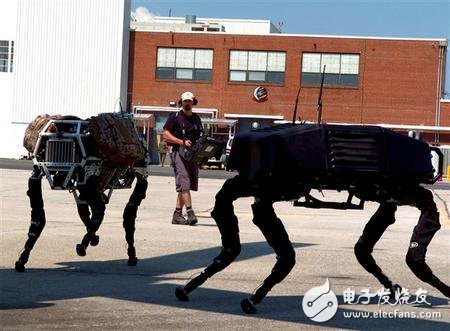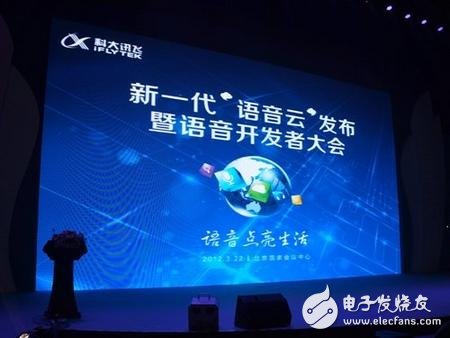Last week, Taiwan's Hon Hai teamed up with Japan's Softbank and mainland China's Alibaba to launch a humanoid robot Pepper. The robot, which sells for about 10,000 yuan, was sold out within the first batch of 300 units. Pepper has the ability to recognize expressions and dialogues and can be used to guide and care for elderly patients. It is a strong alliance between the world's most famous electronic production companies and IT venture capital companies and Internet companies, indicating that robots are gradually entering people's lives from science fiction, scientific research and production.
Japan is leading
Toshiba Beauty Robot
A bionic robot is a robot that mimics humans or other creatures in appearance. The Japanese have a near-fanatic pursuit of humanoid robots. Fourty percent of the world's robots are in Japan, and Japan is also the country with the most robots in the world.
Japan's powerful robots have its deep industrial base. The servo motors that control the precise movement of robots are mainly monopolized by Japan, Germany, and the United States, including companies such as Panasonic and Mitsubishi, which are well known to the public.
In Japan, a large number of companies have introduced robotic molding products, including for businesses and the general public. These humanoid robots are expensive, ranging from tens of thousands of dollars to millions of dollars. One of the most famous is the Honda company's ASIMO robot, which looks like an astronaut, with hearing and vision. ASIMO recognizes human facial expressions and understands human language. The most important thing is that his hands and feet can perform complex movements. His hand can complete the action of unscrewing the lid of the cup, and even sign language, the feet can run away from the ground, the top speed can reach 9 kilometers per hour.
At this year's CES, Toshiba launched a "beauty", "she" can achieve sign language communication, and has the world's most advanced facial expression. Quiet, fast and smooth limb movements are available through 43 pneumatic actuators. Its main purpose is to help the elderly and patients.
In addition to Japanese companies, there are also companies in the United States that are developing similar products. One of them, called "Boston Power," has recently entered the public eye. The company was founded in 1992 and was acquired by Google in the previous year. Boston Dynamics has been working with the US military, most notably BigDog's robotic dog project. This robotic dog can walk on a variety of complex terrain including smooth ice, and can be balanced without being inverted after being smashed. At the same time, the company also has Atlas's two-legged robot, also sponsored by the US military. He has two vision systems and the ability to climb on rugged terrain. American companies are clearly interested in the ability of robots to search for and detect goods in war.
Humanoid robots still have many problems in terms of machinery. Due to the complexity of human limbs, there are high requirements for the design of mechanical components. Moreover, there is still much room for improvement in the upright walking ability. It can be seen from the recent robot running competition held abroad that the upright walking is still a great challenge for enterprises with insufficient technical accumulation.
Given the accumulation of technology on the hardware of Japanese companies for decades, it is not surprising that they can achieve such success on humanoid robots. This aspect makes people lament the development of the Japanese machinery and electronics industry. On the other hand, it also raises questions: Is Japan too obsessed with the appearance of the robot and neglects the inside.
The United States is focused on the inner

Boston Powered Dora
American companies are less concerned about bionic robots than Japan. In addition to mechanical aspects, the United States is far more intensive than the Japanese in the study of robots, namely artificial intelligence.
As early as the 1990s, International Business Machines Corporation (IBM) was developing a super computer deep blue for chess. After defeating the first challenge, this computer defeated the chess champion at that time in 1997. For a while. For the first time, people are worried about the future of artificial intelligence technology. IBM did not stop, and subsequently developed the artificial intelligence computer system Watson. It participated in the American television intelligence program in 2011 and tied two artificial opponents. "Watson" processing speed is equivalent to reading 1 million books per second, and is not connected to the Internet. Such a powerful knowledge reserve is far from being comparable to human beings. Its problem lies mainly in the inability to describe fewer problems. Last month Watson completed a study of 1,900 TED open courses, enough to make a person unable to learn from birth to death.
A US software company, Wolfram, launched the Q&A search engine Wolfram Alpha (W | A) in 2009. This search engine is different from Google and Baidu, which we usually use. W | A will give the answer directly. As a mathematics software company, Wolfram Alpha can easily answer all kinds of math problems, answer math problems without software, directly Solving in search. Moreover, W | A can also answer questions about physical chemistry and even human history, such as asking "who is the current US President's wife" and "the date of Jobs' birth and death", W | A can directly give the answer, thus eliminating the need for Organize the answer in the search results. W | A powerful question and answer system has been adopted by Apple's Siri voice assistant.
In terms of speech recognition technology, three US technology companies, Apple, Google, and Microsoft are stepping up their layout. Siri, Google Now, and Cortana have become a major selling point for various operating systems. Apple Siri benefits from early layout and high popularity of iOS devices. Google Now relies on Google’s deep search engine for more than a decade. Microsoft Cortana uses its dominance in the PC operating system. Will continue to kill in this area.
At the same time, companies such as Google, Microsoft, and Facebook are also starting to make efforts in the field of image recognition. Searching for images, identifying objects in images, and portrait recognition are important applications for image recognition. This year, the Photos app launched by Google has opened the door to the practical application of image recognition technology. The function of Photos intelligently sorting photos is beginning to emerge. The future development direction of image recognition is to replace the human body for complicated review and review work.
In short, unlike Japanese companies, the United States has been a leader in software since the computer technology revolution.
In the case that home robot hardware can not enter the homes of ordinary people, American companies first exerted their power in software, relying on cloud computing technologies on the Internet and existing mobile devices such as mobile phones and PCs to bring "robots" into life. This road is obviously much better than Japan.
China is in the fore

Xunfei Voice
Compared with Japanese companies' love for robots, in China, due to the inferiority of technology accumulation, humanoid robots lag behind countries such as the United States and Japan, and are still mainly at the stage of university research.
At present, robot research in universities such as Harbin Institute of Technology, Tsinghua University, and Shanghai Jiaotong University is well-known in China. In terms of enterprises, well-known robot companies such as Xinsong are still offering industrial products, and there are no human-shaped products of human form.
In terms of software, the gap between Chinese technology companies and Western countries is not as large as hardware, and many practical artificial intelligence products have been released. Among them, Baidu, the largest Chinese search engine, has recently caught up in image recognition and recruited some artificial intelligence experts like Wu Enda and Yu Kai. Earlier this year, Baidu also claimed that the recognition error rate was already lower than Microsoft and Google. However, this month ImageNet broke the "scandal" of Baidu-made-diseases, making the original published research results untrustworthy, and also cast a shadow on Baidu's artificial intelligence team.
Another Chinese technology company, HKUST, is undoubtedly a leader in Chinese speech recognition. With the development of smart phones, HKUST launched the voice input method and voice assistant on the mobile phone. Prior to this, the company's text-to-speech technology was put into use during the Beijing Olympics. Compared with American companies, local enterprises have the advantage of national emotion and policy support in Chinese speech technology, and have taken the lead in China's artificial intelligence research.
Conclusion

Pepper robot
Recently, the “robot†Pepper launched by Hon Hai and Softbank and Alibaba has obvious Japanese characteristics. Although the price of RMB 10,000 is not too expensive, it does not have a price advantage compared with mobile devices in hand. The $180 smart audio Echo launched by Amazon in the United States is inferior. Echo also has the ability to perform speech recognition and speech synthesis.
From the perspective of Asian culture, the cooperation between Japanese and Chinese companies is obviously to make a smart robot with a friendly shape, which carries more emotional characters, rather than an assistant who calls for it. We don't have to expect too much from Pepper, after all, it's just the first generation. Moreover, the price of 10,000 US dollars and the amount of water tested also made us doubt the technical support behind it.
Pepper's launch is a successful attempt by companies in the Asian region in the field of robotics, but if there is more work in this area, Japanese companies, Taiwanese companies and mainland companies should also catch up on software rather than robots. There are toys on the table.
Feyvan Electronics offers custom wiring harnesses and cable assemblies for the automotive industry, also for commercial and industrial transportation vehicle, which include cars, buses, trucks, agricultural machineries, and many other different vehicles.
We have outstanding research and development capabilities, rapid feedback of prototyping and samples, as well as manufacturing facilities for any special and custom cable assemblies even the injection molding part of assemblies.
Automotive Cable Assembly
Automotive Cable Assembly,Car Harness,Car Wiring Harness,Automotive Wiring Harness
Feyvan Electronics Technology Co., Ltd. , http://www.fv-cable-assembly.com
